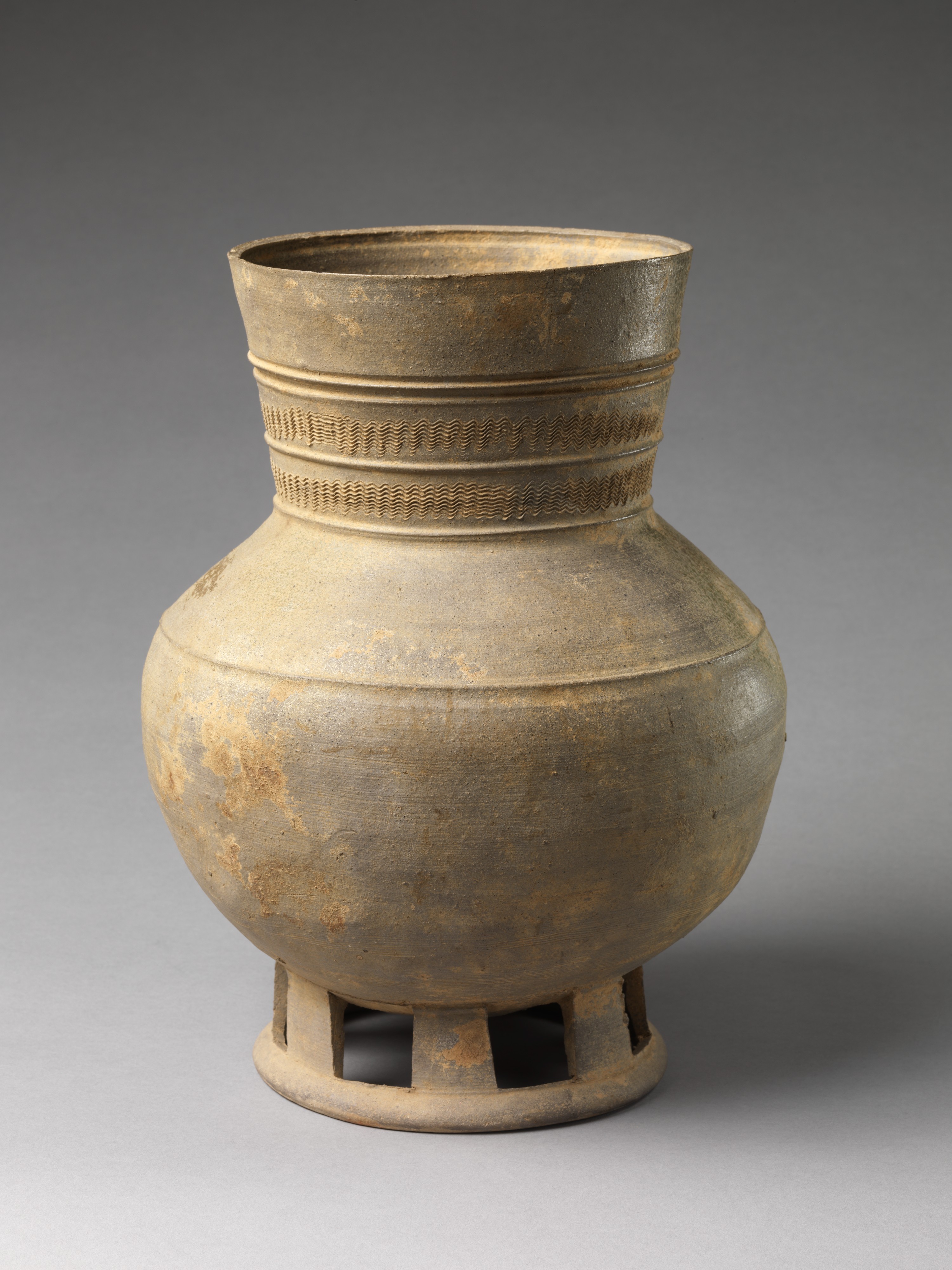Ewer and its influences from exchange
](https://micrio.thingsthattalk.net/NvswN/views/max/640x640.jpg)
Fig 3: Korean footed jar, mid 5th century, Silla kingdom - MET
The ewer is a Japanese Kakiemon porcelain piece with a white porcelain body and overglazed decorations of blue, red, green, yellow and black colors. The ewer dates from around 1670-90 and was made as a porcelain piece exclusively for export. According to Japanese legend, Kakiemon porcelain was first made in the middle of the 17th century in a kiln in Nangwara by Sakaida Kakiemon I, who had learned the enamelling secrets from Chinese potters in Nagasaki.
However, there are no official records of the time to prove that. In fact, the technology and the birth of high-fired wares in Japan date back as far as the 5th century, when it was first introduced in Japan by Korean potters. The technology for porcelain in Japan was likewise founded by Koreans in the 1590s.